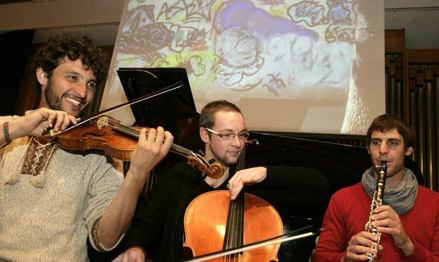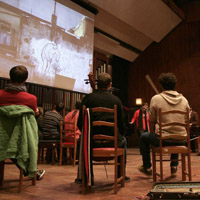Latest News Archive
Please select Category, Year, and then Month to display items
20 August 2025
|
Story Dr Annelize Oosthuizen
|
Photo Supplied
 Dr Annelize Oosthuizen, Subject Head of Taxation in the School of Accountancy, University of the Free State.
Dr Annelize Oosthuizen, Subject Head of Taxation in the School of Accountancy, University of the Free State.
With the two-pot retirement system having been effective from 1 September 2024, it is important to demystify certain aspects to prevent an unpleasant surprise when you retire. Although there are other complex rules, this article was simplified and does not deal with exceptions. It also does not deal with members of a provident fund who were 55 years of age or older on 1 March 2021. Furthermore, reference to retirement funds is to a pension fund, provident fund or a retirement annuity fund (a discussion on preservation funds is therefore excluded).
Three, not two pots
Firstly, there are effectively three pots and not two.
- The first pot is referred to as the vested component. You will only have this component if you were a member of a retirement fund prior to 1 September 2024. This component consists of the member’s interest (balance) in the retirement fund on 31 August 2024 (the day before the implementation of the two-pot system) after being reduced with the amount of the seed capital that was transferred to the savings pot (see below). This seed capital amount was calculated as the lesser of 10% of the value of the member’s interest in the fund on 31 August 2024 or R30 000. No further contributions will be allocated to this component from 1 September 2024. Upon retirement, one-third of the funds in this component can be taken in the form of a lump sum. The balance will be transferred to the retirement component below and will be paid out in the form of monthly annuities.
- The second pot is the savings component. The opening balance of the savings component is the seed capital that was transferred from the vested component above. Thereafter, from 1 September 2024, one third of your monthly contributions to the retirement fund are allocated to this component.
- The third pot is the retirement component. From 1 September 2024, two-thirds of your monthly contributions to the retirement fund are allocated to this component. The funds in this component can only be accessed upon retirement (i.e. after reaching your retirement age, which is stipulated in the fund rules). Furthermore, upon retirement, the money in this pot is only paid out in the form of monthly annuities (i.e. monthly pensions) and no lump sum can be taken from this pot unless its total value is R165 000 or less.
Withdrawals are taxed unfavourably
Secondly, withdrawing from the savings component before retirement has adverse tax implications.
- From 1 September 2024 onwards, one is allowed to make an annual withdrawal (minimum of R2 000) from the savings component even if you have not yet reached your retirement age and although you are still employed. It is, however, important to remember that such withdrawals are taxed very unfavourably since they are taxed by using the normal progressive tax tables that apply to your other income such as salary. If you wait for your retirement and only withdraw from this savings component upon retirement, the first R550 000 will be tax-free and withdrawals above R550 000 will be taxed at rates much lower than the current progressive tax rates applicable to other income.
- Upon retirement, only the money in the savings component is allowed to be taken as a lump sum. If you therefore withdraw all the money from this pot annually prior to retirement, you will not have any funds available to access as a lump sum on retirement and will only have access to the monthly annuities payable from your retirement component.
Less funds available
Lastly, for those members who have a vested component (i.e. who became members of the retirement fund before 1 September 2024), the old rules still apply to the funds in that component. Therefore, upon retirement, you will still be able to take one third of the value of your vested component as a lump sum. The balance will be transferred to the retirement pot and will be paid out in the form of monthly annuities.
To summarise, even though it might appear lucrative to withdraw from your savings component annually, it is advised that you refrain from doing it unless you really need the funds to fulfill basic needs. Withdrawing prior to retirement has the following adverse consequences:
- Money withdrawn from the savings component is taxed at higher rates than what would have applied had you reached your retirement age and retired. You will therefore not make use of the R550 000 tax-free option.
- You will have less funds available to pay out as a lump sum on retirement. As a simple calculation, had you not withdrawn R30 000 in a single year, conservatively calculated at a rate of 5%, this R30 000 would have grown to R79 599 (R139 829 if a rate of 8% is used) calculated over 20 years that can be withdrawn tax-free when utilising the R550 000 tax-free portion on retirement.
‘Celebrating the music of our times’
2013-07-25
|
 |
| 25 July 2013 |
The Odeion School of Music’s (OSM) New Music Week, hosted from 17–20 July 2013, offered an experience of profundity.
This was the second week-long festival of its kind to be hosted by the OSM – last year the 90th birthday of the South African composer, Stefans Grové, was celebrated with concerts and a symposium. This year the New Music Week focused on the visit of Ensemble Trans-Z under the artistic leadership of former OSM student, Alfred Vorster, a composer living in Zürich. The Order of the Odeion School of Music was bestowed upon Vorster during the festival. The members of the ensemble are the Belgian pianist Lukas Huisman, Danré Strydom (currently an OSM doctoral student in clarinet, based in Ghent), the Argentinian violinist Juan Braceras and the Swedish cellist Karolina Öhman (both currently living in Basel, Switzerland).
The week included three lectures. Lukas Huisman elucidated his doctoral project, Alfred Vorster offered an analytical perspective on the work of Helmut Lachenmann and Hannes Taljaard (Potchefstroom) delivered a commentary on his own composition practice. In addition to presenting masters’ classes in their individual instruments, Ensemble Trans-Z also hosted two workshops – one for the Mangaung String Project and another for OSM students and staff. These workshops focused on creative improvisation practices within an avant-garde style.
composition practice. In addition to presenting masters’ classes in their individual instruments, Ensemble Trans-Z also hosted two workshops – one for the Mangaung String Project and another for OSM students and staff. These workshops focused on creative improvisation practices within an avant-garde style.
The highlight of the festival was two gala concerts that were held on 19 and 20 July. The first concert was hosted by Ensemble Trans-Z themselves, with a selection of compositions in the avant-garde style. The programme included challenging listening material and was creatively presented with unconventional lighting techniques and visual material.
The concert on 20 July consisted of New Music of a more conventional nature. The Odeion String Quartet offered a varied presentation which consisted of a rich mix of talent. OSM postgraduate students Marianne Cilliers, Karol Legierski and Eljee du Plooy formed part of this spectacular performance. The OSM flute lecturer, Handri Loots and the members of Ensemble Trans-Z supplied additional depth to the concert. The experience was made extra special by the recently-formed New Music Ensemble of the School of Music at the North-West University – led by Augusto Arias. Under conductorship of Jan-Moritz Onken, the OSM Camerata completed this impressive collaboration.
The Camerata’s recital of Hendrik Hofmeyr’s Phantom Waltz, which the composer newly arranged especially for this ensemble, was but one of the artistic highlights of an inspiring presentation.